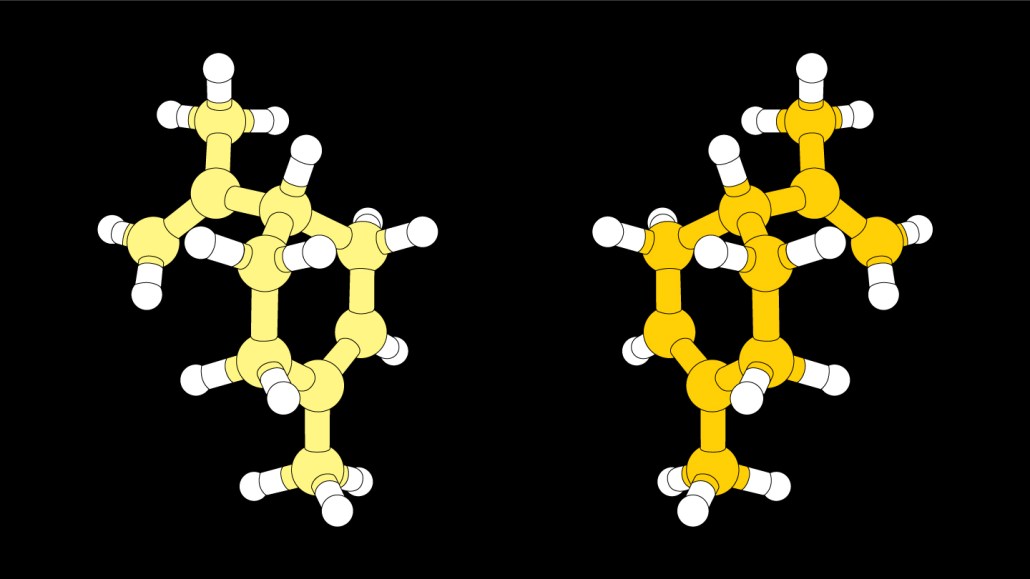
Many chemical reactions produce two versions of a molecule that are mirror, or asymmetrical, images of one another, such as these illustrations of a molecule called limonene. Often, chemists want to make just one.
©Johan Jarnestad/The Royal Swedish Academy of Sciences